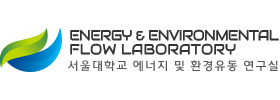Magnetic Resonance Velocimetry / Thermometry


Magnetic resonance (MR) techniques can be utilized to examine complex 3D flows in engineering. Magnetic resonance velocimetry (MRV) enables quantitative measurement of 3 dimensional, 3 component (3D3C) mean velocity without any optical windows or flow tracers, using a medical MRI scanner as shown above. This method can typically measure 1-2 million velocity vectors at the submillimeter resolution, within 3-4 hours. As an example, MRV for fully developed pipe flow is shown below [1]. The experimental data have small uncertainty, as evidenced by the short uncertainty bars which are similar in size to data symbols. The results are quite accurate, as displayed by the good agreement with the direct numerical simulation (DNS) results. We are applying MRV in various applications, such as internal cooling flow in gas turbine blades and respiratory flow in the human body.
Magnetic resonance thermometry (MRT) is a temperature measurement technique, which can non-intrusively measure complex 3D relative temperature fields in engineering systems such as heat exchangers or gas turbines. Using this method, convective heat transfer and thermal mixing can be examined without any optical window. For verification, heated fully developed pipe flow with adiabatic walls has been measured as shown below [2], and the resulting temperature fields have highly uniform distributions. The average relative temperature data match well with reference thermocouple data.
[1] Baek, S., & Hwang, W. (2017). Fully developed pipe and triangular channel flow measurement using magnetic resonance velocimetry. 70th Annual Meeting of the APS Division of Fluid Dynamics, Denver, CO.
[2] You, H., Baek, S., Kim, D., Lee, W., Oh, S., & Hwang, W. (2020). Application of magnetic resonance thermometry (MRT) on fully developed turbulent pipe flow using 3T and 7T MRI. The Korean Society of Visualization, 18(1), 26.
